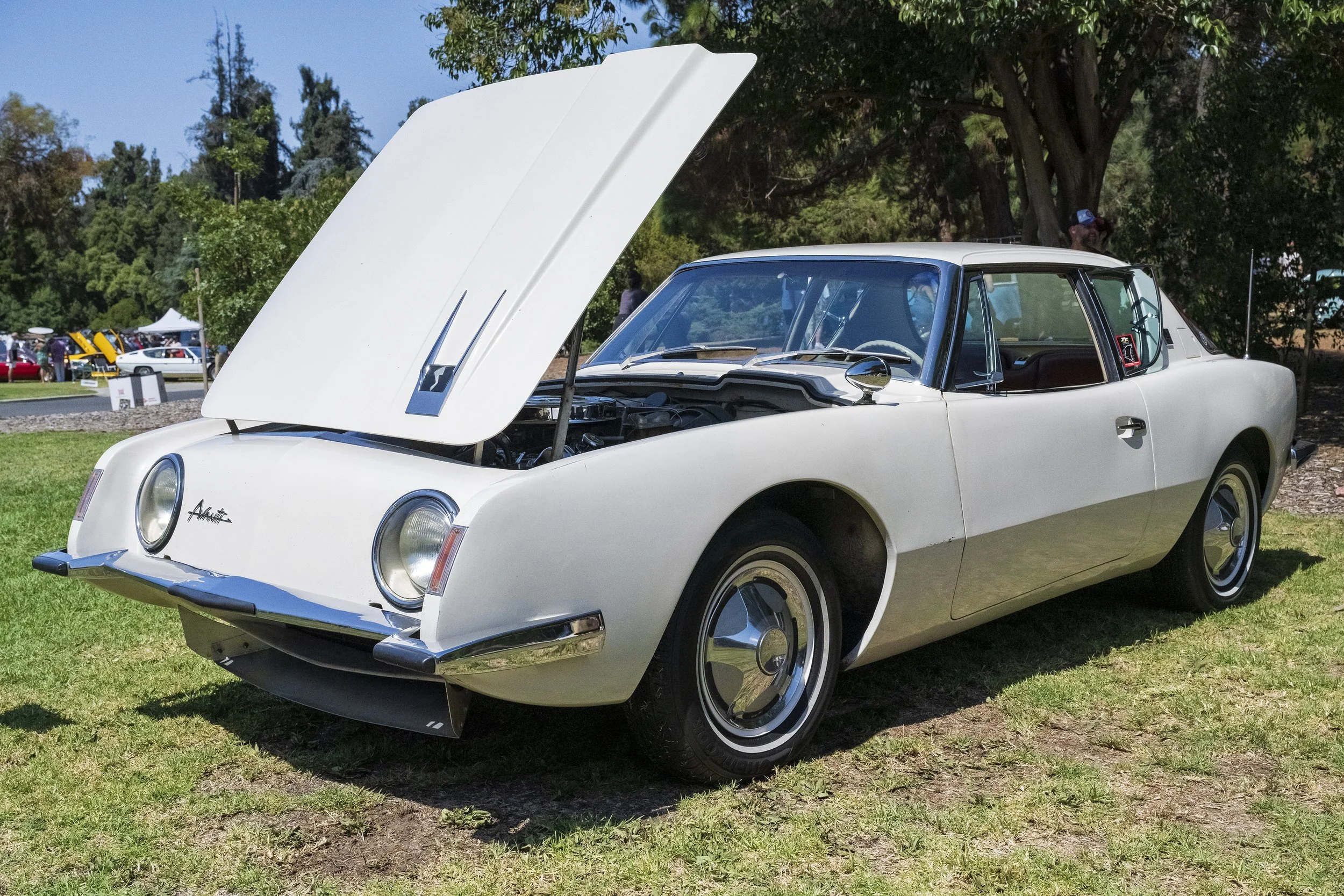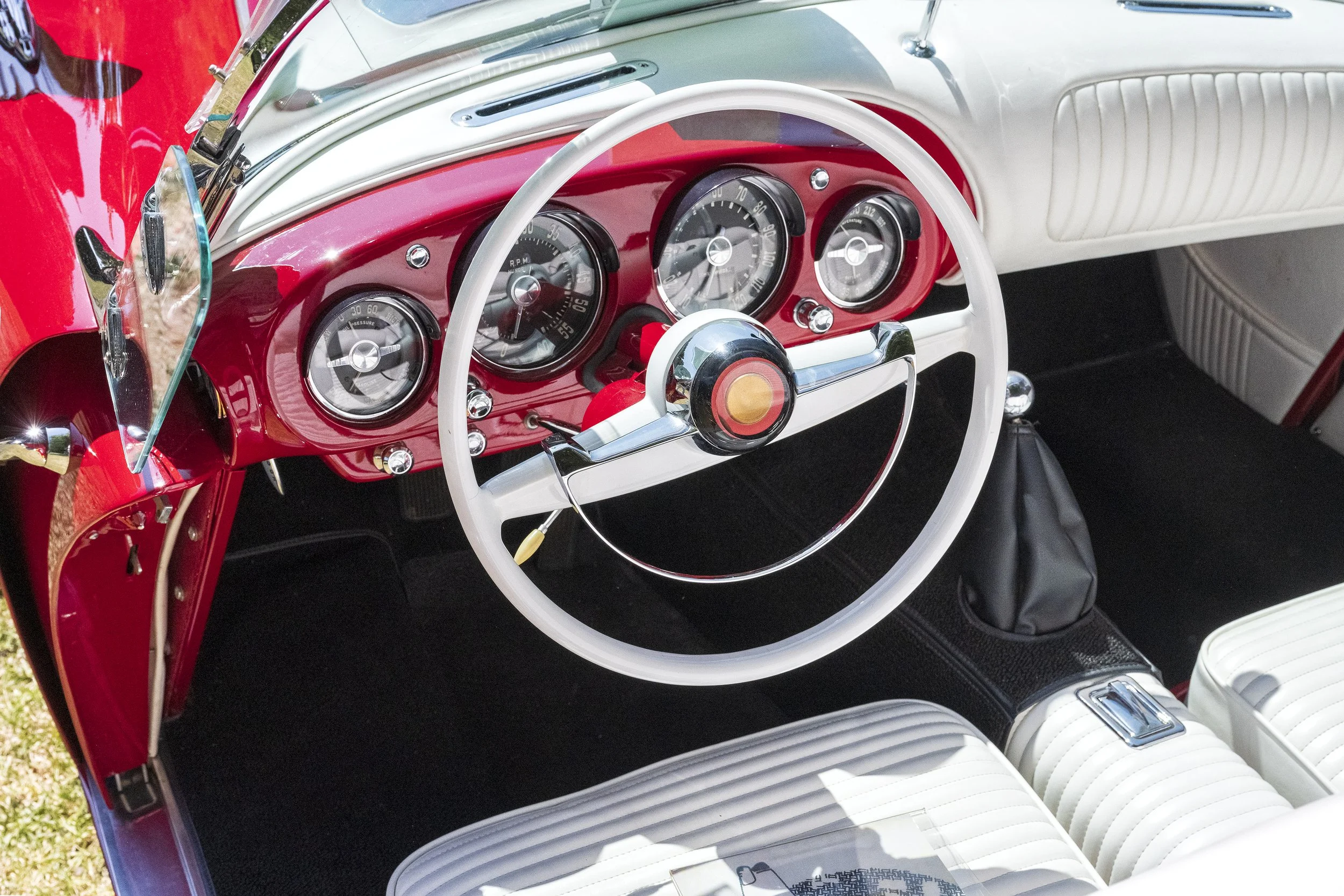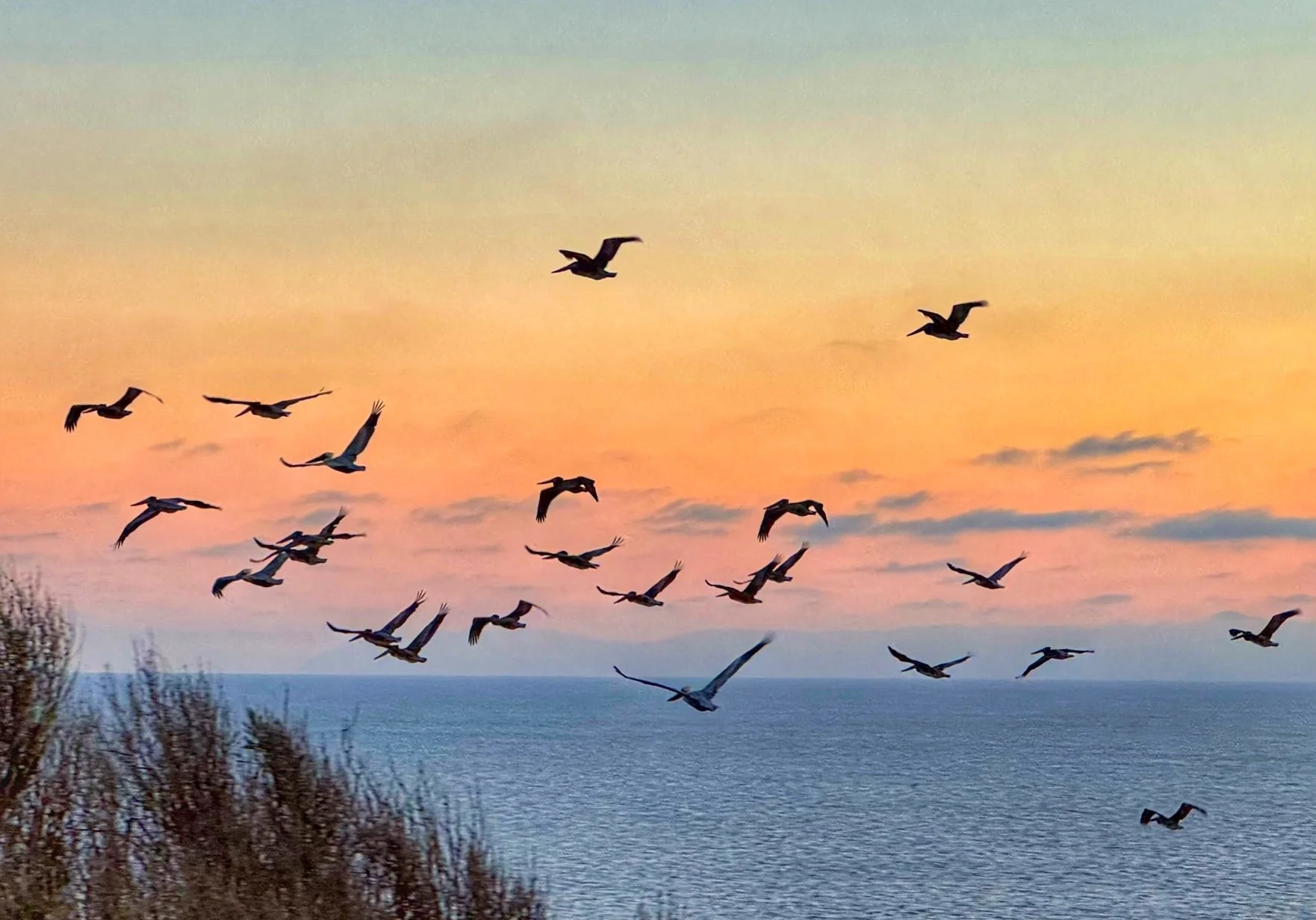San Marino Motor Classic Takes a Ride Down Memory Lane By Photographer & Contributor Steve Tabor
There is no doubt that the car culture has been embedded in Southern California’s culture for decades. Many of us have vivid memories of our family car trips, the automobiles that navigated our neighborhood streets, or the variety of cars that found their way into the parking lots of our high school campus.
1963 Volkswagen 11c Export Deluxe
The San Marino Motor Classic (Classic) committee headed by Palos Verdes High School alumnus, Aaron Weiss, carefully curated an exhibition of automobiles dating back to the early days of motor vehicles up to more recent times. Every vehicle on display is maintained in its original factory condition or restored to a condition that matches its original factory condition.
For the owners of these vehicles, this was a judged event with each vehicle placed in a specific category, with no detail overlooked or ignored in the final judging. Judging included technical aspects of the state of preservation or restoration along with the vehicle’s history and its character and charm.
Avanti Studebaker
The Studebaker Avanti models years include 1962 and 1963. An Avanti equipped with a supercharged 289-cubic-inch engine capable of reaching a top speed of 170 mph at the Bonneville Salt Flats. At the time of its release, it was the only four-passenger high-performance car in America.
Early motor cars were classified as Brass and Nickel vehicles because of the use of brass on many of the fittings and fixtures. Nickel was used in place of chrome for other fittings and accents. These vehicles reflected the simple designs inspired by their production line assembly to the artistic European-inspired designs.
1909 De Dion-Bouton Type De Course
1909 De Dion-Bouton Type De Course
The 1931 Essex Six Super Boattail Speedabout demonstrates how the motor industry evolved from the post-World War I era to a more modern and powerful design. This particular car is one of six surviving models that was originally manufactured by Murray, a subcontractor for Hudson Essex, using the Essex frame, engine and other components. This particular vehicle was originally purchased in the City of Pasadena.
1931 Essex Boattail Speedabout
In 1956, the car was purchased from a junkyard by WW II veteran, John Cook. Cook drove the car until the 1970’s before making it part of his 90 plus car collection in the Mariposa, California. The car’s current owners, Michelle and Chris Roth share that Chris’s family love for Hudsons led to the purchase from Cook 2013.
For collectors like the Roth’s the Essex boattail form sparks images of Duesenberg and Auburn only at an affordable price.
1931 Essex Boattail Speedabout
As far as their 1931 Essex Super Six Boattailed Speedabout, Michelle and Chris state that it was a complete restoration from the tires up, taking 10 years to complete the project, mostly on weekends. The mechanical, machining, and interior were left to the professional shops. Chris and his nephew, Randy, did the assembly of the vehicles and applying the paint. Missing parts like one of the wire wheels and multiple hubcaps took extensive networking with clubs and swap meets to secure, especially since they only fit 1931 Essex and many had standard wood wheels.
1931 Essex Boattail Speedabout
Michelle shares that when they initially acquired the vehicle, their seven-year-old daughter, Kiersten, loved climbing into the rumble seat. But, the rumble seat has lost its appeal since she has grown into a beautiful seventeen-year-old.
On a recent road trip in San Simeon, Michelle and Chris convinced Kiersten to hop into the rumble seat for one more ride filled with big smiles and happy memories before Keirsten heads off to UCLA in the fall.
Photo courtesy of Chris Roth
Michelle and Chris dedicate the restoration of their 1931 Super Six to remember and honor Chris’ father and mother.
1931 Essex Boattail Speedabout
As the world entered the decade of the 1930’s, French automobile auto makers, Delahaye and Talbot, began to impact the auto industry with their art deco influenced designs. Delahaye’s art deco designs were manufactured from approximately 1935 to early 1950’s. Talbot’s Talbot-Lago designs were produced from the mid-1930’s to the early 1950’s. Although both manufacturers ceased production in the mid to late 1950’s, their designs still continue to stop people in their tracks as they see these classics pass by.
1939 Delahaye Type 165
1939 Delahaye Type 165
The 1939 Delahaye 165 Figoni-Falaschi was displayed at the 1939 New York World’s Fair. The car could not be fully completed at the time of shipping, so it arrived at the World's Fair without an engine. Due to the outbreak of World War II the car was impounded by U.S. Customs. Eventually it was placed on public auction and fitted with a Cadillac motor. The car was purchased by a serviceman from a used car lot in Honolulu. In the 1970’s his widow sold the car to a tow truck driver. Later the tow truck driver sold the car to Peter Mullin and Jim Mullin. The Mullins undertook a restoration effort that included fitting the vehicle with an engine created from the original factory drawings.
1937 Talbot Lago
1937 Talbot Lago
After its victory at the 1937 French Grand Prix, the 1937 Talbot Lago took its place on the world stage. The aerodynamic styling was inspired by a raindrop highlighting its speed and elegance. A favorite among the Hollywood elite, provided a safe haven for many of the fourteen cars during World War II. Thirteen of these cars exist today.
Among the other eye catching vehicles on display were the luxurious 1930’s and early 1940’s editions manufactured by Bentley, Jaguar, La Salle, and Packard. Each featuring more stylish designs, powerful motors, and spacious interiors.
1948 Bentley Mark VI Standard Steel Sports Saloon
1936 La Salle 34 Fleetwood
1935 Jaguar SS One Airline Saloon
1937 Packard Super 8 Club Sedan
Other vehicles showcased were the fashionable family oriented designs sold in the 1940’s, 1950’s, and 1960’s. The boxy family car designs of the 1940’s inspired at a time when train locomotives symbolized modernism in the transportation industry, eventually gave way to the sleeker designs of the 1960’s which signaled the coming of the space age.
1941 Cadillac 62 Deluxe Coupe
1954 Buick Skylark
1965 Pontiac GTO
The post-World War II period also sparked desire for adventure among the motoring public. U.S. companies such as Ford and Chevrolet took note of the number European roadsters making their way into the American market. Few people are aware that Kaiser Motors, primarily known for their conservative sedan designs decided to attempt to break into the roadster market with their 1954 Kaiser Darrin 161. The roadster took its name from the company President, Henry J. Kaiser, and its designer, Howard “Dutch” Darrin.
1954 Kaiser Darrin 161
The convertible design featured an all fiberglass upper body. Unusual for the time, but using fiberglass reduced the weight of the vehicle. More importantly, at the time Kaiser Motors was facing financial difficulties, molding the fiberglass upper body was far less expensive than creating the necessary tooling need to bend the sheet metal to form the sleek roadster body.
Only 435 Kaiser Darrin 161’s rolled off the production line in 1954. Kaiser Motors ceased its entire U.S. production in 1955. It was reorganized and eventually resurfaced as Industrias Kaiser Argentina and produced sedans until the 1960’s.
Phillip Jelinek refers to his ’54 Kaiser Darrin 161 as a barn find. Around 2012, Jelinek reports that he contacted the previous owner. At the time, the previous owner possessed 12 Kaiser-Darrin 161’s in various forms of disrepair. Jelinek carefully surveyed the selection of vehicles and eventually found his project.
1954 Kaiser Darrin 161
Early on Jelinek was hopeful that he could salvage the original body by performing repairs on the damaged sections. During his assessment and investigation of the damage, Jelinek discovered under the several layers of paint one of the paint layers closely matching the color used by the Kaiser racing team of Kaiser-Darrin 161’s. Jelinek believes his roadster could have be part of the Kaiser racing team, but he has yet to confirm his theory.
Seeing the damage to the body was far too much to repair, Jelinek concluded the only solution was to completely reconstruct the body. Fortunately, Jelinek found a professional who could carefully reconstruct the fiberglass body that matched its original factory specifications.
1954 Kaiser Darrin 161
One of challenging aspects of reconstructing the fiberglass body came with fitting the both of the car’s pocket doors. In their closed position, the doors must latch to their respective door frames. When they retract, the doors have to carefully conceal themselves into he front fenders.
After completing the necessary mechanical work, Jelinek was able to mate the upper body of the car to the chassis. Jelinek admits that he does not put many miles of the car to maintain its restored condition and avoid paint damage. But according to his wife, Jelinek gets as much joy from telling its story to anyone interested in listening.
1954 Kaiser Darrin 161
It may be hard to believe that the cars baby boomers knew are now considered classics and are sought after collector items. Not only are the sedan’s that many parents depended on to drop the kids at school and drive to work are considered collectables, but the mainstays of family vacations, the family station wagon, are now some of the most prized possessions of collectors.
1941 Cadillac 63 Custom Woodie
1956 Chevrolet 1956 Bel Air Wagon
1967 Ford Country Squire
Along with the other vehicles on display, the Classic found space for some of the forgotten and unusual utility vehicles. Some were designed with economy in mind, others were designed for a different form of motoring enjoyment. The design of the 1950 Willy’s Overland Jeepster owned by Karla and Bill Stahlman combined the Willy’s trademark of a rugged jeep design, with the evolving design of a European sports roadsters.
1950 Willy’s Overland Jeepster
Karla and Bill, who also own a Volkswagen Thing, admit that the Jeepster is not the most practical vehicle to own. The 2 wheel drive limits the ability to take the vehicle off road. Also, the design the calls for rear seat passengers to enter the vehicle by climbing over the rear fender of the car. As far as taking the vehicle out for a spin, they caution, you better check the weather report.
The Jeepster design omitted roll up side windows. Each of the four window frames must be physically fitted into the frame of the car by inserting the set of small of pegs on the top and bottom of each window frame into the matching holes found along the top of the door frame which extends back to the passenger section and the holes in the bottom of the convertible roof frame extending from the doors to the passenger section.
1950 Willy’s Overland Jeepster
The couple purchased the vehicle a little more than a year ago from a California transplant who lives in Idaho. They were happy to find that the Jeepster was well maintained and only required some clean-up that could be performed by Bill and their son.
According to Karla and Bill, Jeepsters were only manufactured from 1948 to 1951. The 1948 and 1949 models featured a flat grill design. In 1950, the manufacturer changed to a “V” grill design that was incorporate into the truck and wagon designs. The Jeepster was not popular among the motoring public. Willy’s Overland determine that their 1951 model would be last production year. The 1951 models were produced in limited quantities. Not wanting to invest more money in the last model year, Willy’s Overland decide to produce many of the vehicles using the parts that were manufactured for the previous model years.
1950 Willy’s Overland Jeepster
Karla and Bill admit that despite its impractical nature there are no plans to part with their cherished Jeepster.
1950 Willy’s Overland Jeepster
Of course, the Classic would not be complete without a selection of vintage Mercedes-Benz sedan and sports models. Among the winning models were the 300 SL Gullwing and the 300SL Roadster. Winners of the Touring Class included the Mercedes-Benz 600.
1957 Mercedes-Benz 300SL Gullwing
European sports cars and high performance cars were also a part of the Classic, with selected models produced by such noted manufacturers Porsche, Lamborghini, Alfa Romero and Ferrari.
1973 Porsche 911 RS
Although every vehicle on display seemed to be a winner, the judges award the Best in Show in the Pre-War category to 1939 Delahaye Type 165 Figoni & Falaschi Cabriolet. The Best in Show for the Post-War category went to the 1966 Ferrari 275 GTS.
1966 Ferrari 275 GTS
SMMC organizer Aaron Weiss presents Best in Show for Post War trophy to winner Rick Principe and his 1966 Ferrari 275 GTS
1939 Delahaye Type 165
The 1939 Delahaye 165 Figoni & Falaschi Cabriolet which is part of the Petersen Automotive Museum’s collection, won the Best in Show Pre War
Steve Tabor
This South Bay native’s photographic journey began after receiving his first 35 mm film camera upon earning his Bachelor of Arts degree. As a classroom teacher he used photography to share the world and his experiences with his students. Steve began his photography career photographing coastal landscapes and marine life. His experiences have led him to include portraits and group photography, special event photography as well as live performance and athletics in his portfolio. As a contributor and photojournalist, he has published stories about the people, places and events in and around the Palos Verdes Peninsula and beyond.
Interested in seeing more of Steve’s work, visit website at: www.stevetaborimages.com









































